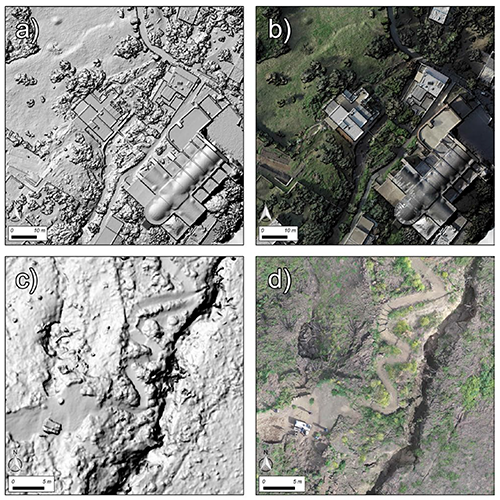The March 2023 UAS-based high-resolution Digital Surface Model and orthomosaic of the NE flank of Stromboli volcano (Sicily, Italy)

Nannipieri L, A. Bevilacqua, F. Di Traglia, M. Favalli, A. Fornaciai (2023). Annals of Geophysics. https://www.annalsofgeophysics.eu/index.php/annals/article/view/8982
Abstract
Stromboli is a volcanic island in a persistent state of activity, located in the Tyrrhenian Sea off the northern coast of Sicily. During the night of 25 and 26 May 2022, a massive human-caused wildfire destroyed most of the vegetation cover on the NE flank of the island, just above the main village.
On 12 August 2022, a particularly heavy rainfall event remobilized the loose volcaniclastic deposits that covered the burned volcanic flank, no longer protected by the vegetation. This event triggered several debris flows that were channeled by the roads and flooded several streets and buildings, causing severe damage to the village. In late-March 2023, just before the large spring vegetation growth, we conducted an Unmanned Aerial System (UAS) photogrammetric campaign over a sector of the NE flank of Stromboli Island, to acquire data on an area massively affected by the wildfire first and by the debris flows later. Here we present and share with the scientific community and civil authorities the results of this UAS campaign, which consists of a 1.4 km2 wide 10 cm-resolution Digital Surface Model (DSM) and 1.6 cm-resolution orthomosaic. These data clearly show the dramatic consequences of the 2022 tragic events at Stromboli. We also produced an elevation difference map by comparing the 2023 DSM here generated and the 2012 LiDAR DEM to provide a first overview of the thickness of the deposits that were removed from the Stromboli NE flank.



Devi effettuare l'accesso per postare un commento.